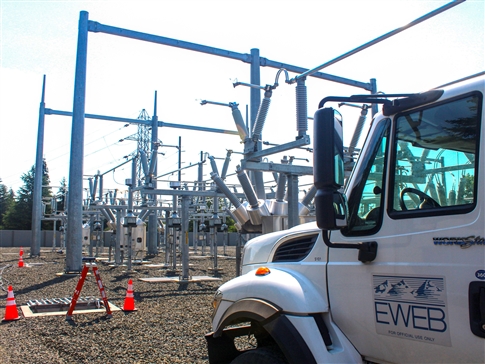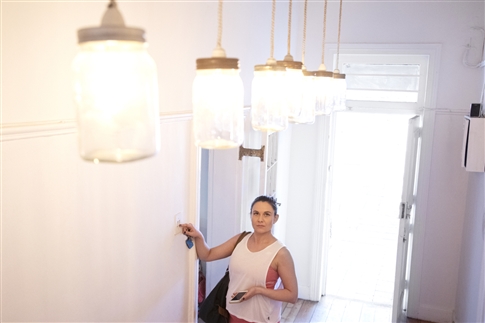The rebuild of the Eugene Water & Electric Board’s (EWEB’s) Currin Substation is almost complete, marking a significant milestone in EWEB’s investment in major infrastructure modernizations.
EWEB engineers and contractors started demolishing the 60-year-old station in the spring of 2023 and has been working on it ever since. Over the next few months, the team will make final connections and adjustments and test the station equipment and control system to prepare for re-energization. The completion of this $16.1 million project is projected for October of this year.
The Currin Substation near Garden Way and Interstate 105 was constructed in 1962 and is considered the “Grand Central Station” of EWEB’s electrical grid and is a key hub connecting various parts of EWEB’s system.
The substation interconnects transmission lines to large electrical sources owned by the Bonneville Power Administration (BPA) and PacifiCorp to EWEB’s grid, and also connects transmission lines to critical sources including EWEB’s Hayden Bridge filtration plant and to Eugene’s downtown electrical network.
To accommodate all this transmission infrastructure, Currin is just over two acres as where the typical EWEB electric substation is closer to 0.6 acres.
“The rebuild of Currin substation will allow us to increase load capacity to ensure we meet future demands and improve reliability by avoiding outages due to equipment failure or routine maintenance,” said Philip Peterson, EWEB engineer.
In addition, the new station is built to current seismic standards and practices including robust and deep foundations, large equipment designed to support seismic standards, and flexible connections to allow structures within the substation to move independently of each other. Currin also incorporates enhanced security features to keep workers and Eugene's electric supply secure.
Currin Substation is just the first of several substations scheduled for a rebuild over the next decade as part of EWEB’s major infrastructure investments through our Capital Improvement Plan for rehabilitating, replacing, and installing new infrastructure.
EWEB invests today for a resilient tomorrow
EWEB will invest over $600 million on electric infrastructure in the next decade based on the utility’s most recent Capital Improvement Plan. Just under half of the projects outlined in the plan are considered risk-based, associated with reliability and resiliency enhancements due to the age of system and emerging risks to the electric system such as the Subduction Zone Earthquake and Wildfire.
Many of the substations in EWEB’s electric system were constructed in in the 1960s and 1970s, which is why EWEB is investing to manage the ballooning need to replace this aging equipment while maintaining reliability and increasing resiliency to potentially disruptive events.
The next series of substations to be rebuilt from the ground up will be the Jessen and Cal Young substations, which will span between 2026 and 2027. The last half of the plan and beyond is focused on substation rebuilds and other replacements, which we will prioritize by customer impact, residential customer count, age and condition of equipment, and commercial and industrial impact.
“EWEB is always balancing the obligations of serving the immediate need for customers and preparing for the future, even through unexpected events. The objectives of the Capital Plan, spread over the next decade, is a great example of our service to both,” said Tyler Nice, EWEB electric operations manager. “A rebuilt substation will last over 50 years into the future, which is why it’s a job worth doing right. Our team and contractor partners have been methodical and planful in constructing and commissioning this substation that will serve generations of the Eugene community to come.”





